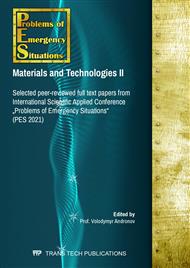p.33
p.40
p.51
p.61
p.68
p.77
p.85
p.93
p.100
Alternative Strengthening of Jewelry Tools Using Chemical-Thermal and Local Surface Treatments
Abstract:
The study is aimed at surface strengthening of jewelry tools. Samples in the form of a tool with a flat and curved surface profile are considered. Macrophotographs of jewelry korneisen at different stages of wear, as well as after restoration and strengthening are given. The results of the influence of chemical-thermal and thermo-friction treatments on the structure and properties of U7 and U8A steels used for jewelry tools are presented. The methodology of experimental researches is given. The equipment used for each of the hardening methods investigated in this work is considered. Auxiliary media and features of sample preparation for the experiment are also described. Photos of samples and some equipment at different stages of the study are given. Data on the distribution of microhardness, photographs of microstructures in cross section of samples after different types of hardening are presented. A comparison of the strengthening efficiency of the samples after the use of different processing methods is performed.
Info:
Periodical:
Pages:
68-76
Citation:
Online since:
July 2021
Authors:
Price:
Сopyright:
© 2021 Trans Tech Publications Ltd. All Rights Reserved
Share:
Citation:


